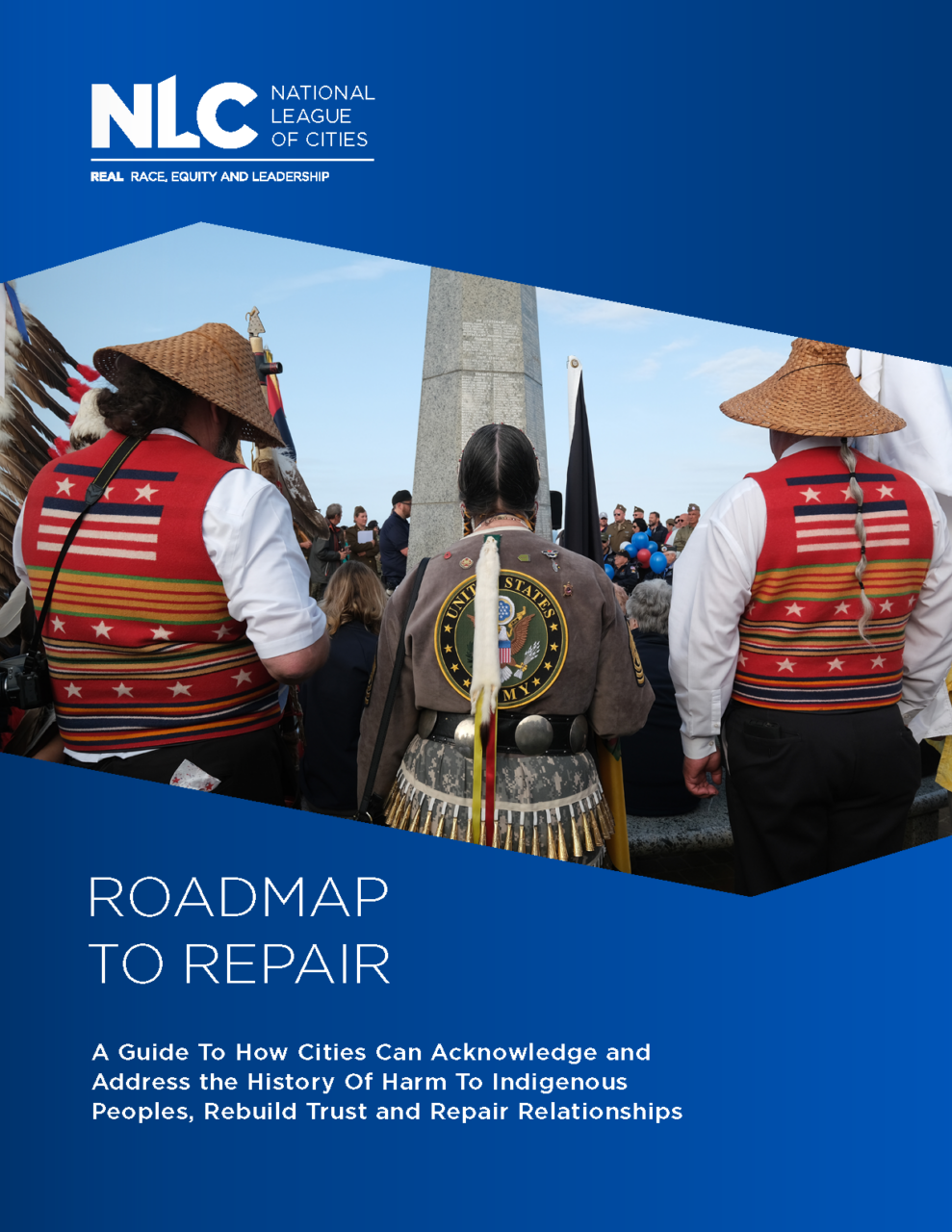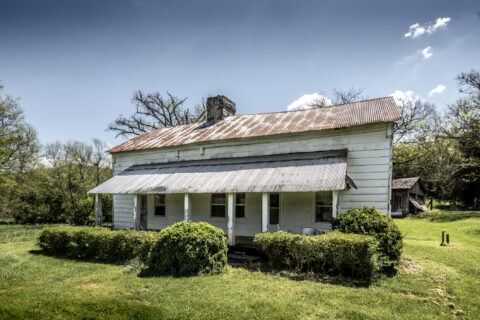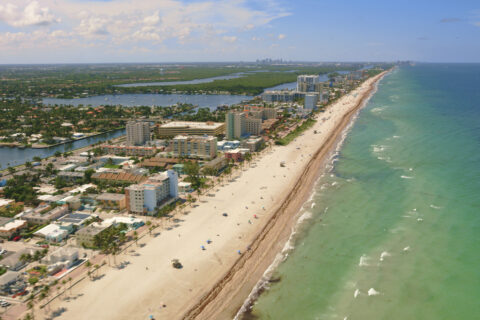*Note: There are many different naming conventions for Native American and Indigenous communities, who are in no way a monolith. Community members decide for themselves which terms best align with their identity. The authors of this blog recognize this important aspect of language, but choose to use the term “Indigenous peoples” throughout for clarity and consistency. The term “Tribal residents” is reserved for Indigenous peoples living on sovereign Tribal Nations.
Long before European intervention began in the Americas, Indigenous peoples lived in distinct and thriving communities. The housing arrangements of these communities reflected the values, geography and needs of residents. Colonialism fundamentally disrupted these housing practices.
Each federal policy era gave way to the displacement and disinvestment of Indigenous communities, creating a housing landscape unrecognizable from that which existed five centuries ago. Acknowledging this history is vital to understanding the housing needs and challenges of Indigenous peoples and Tribal residents today.
Twenty-two percent of Indigenous peoples still live on Tribal lands today, while 72 percent live in urban or suburban settings. Both urban Indigenous peoples and Tribal residents confront homelessness and unsafe living conditions at greater rates than their non-Indigenous counterparts: while approximately 1 out of every 1,000 people in the U.S. is experiencing homelessness, 1 out of every 200 Indigenous peoples is. Estimates from the U.S. Department of Housing and Urban Development (HUD) indicate that Indigenous peoples represent 7 percent of the total homeless population, despite representing only 2 percent of the U.S. population.
Within both Tribal and urban Indigenous communities, overcrowding and low-quality housing are also common: 99.8 percent of Tribal governments report overcrowding or “doubling up” as a prominent issue. While roughly 2 percent of the general U.S. population experience overcrowding, it affects 16 percent of Tribal residents. Urban Indigenous households are also approximately twice as likely as non-Native households to lack basic necessities such as plumbing and kitchen facilities, and are three times more likely to lack adequate telephone services. Broadly speaking, homeownership rates for Indigenous peoples also remain far below white homeownership rates, hovering around 53 and 71 percent respectively.
Critical Issues Related to Housing for Indigenous Peoples and Tribal Residents
Behind these statistics exist critical issues that influence the housing landscape for Indigenous peoples.
For Tribal governments, the lack of dedicated federal funding remains a primary concern. The Indian Housing Block Grant (IHBG), administered by HUD, provides Indigenous communities with their largest source of housing-specific dollars. However, funding allocations for the IHBG have not kept pace with inflation or the growing need for housing on Tribal lands. While spending for the program has increased nominally in the past twenty years, inflation-adjusted numbers show that the buying power of Tribal governments has significantly decreased. Pandemic programs provided some relief to Tribal governments, but the funding remains inadequate to create the estimated 68,000 new homes needed to meaningfully alleviate overcrowding and unsafe housing conditions.
In addition to the funding barriers that hinder efforts to increase the housing supply on Tribal lands, red tape also surrounds the process. Tribal leaders must receive permission from the Bureau of Indian Affairs before building on or mortgaging the land due to the trusted status of Indigenous land, a process that can further impede new development.
Indigenous peoples living away from Tribal lands face related but distinct challenges.
The flagship grants earmarked for Indigenous housing, such as the IHBG and the Indian Community Development Block Grant Program, go directly to Tribal governments. This leaves a funding drought for urban organizations and local governments serving Indigenous peoples. Despite significant investment from the American Rescue Plan being directed to Tribal governments and Native communities, no funds were explicitly directed toward housing for Indigenous peoples living outside of Tribal areas. Instead, housing and homelessness service providers for Indigenous communities largely rely on competitive federal grants, state grants or private dollars.
This contributes to a drastic undersupply of culturally competent housing services and assistance for urban Indigenous peoples. One 2017 survey of Indigenous peoples experiencing homelessness in Minnesota found that many felt unsafe and a lack of ownership when visiting non-native shelters, leading 80 percent of people interviewed to state that they would not return.
How Cities Can Advance Housing for Indigenous Peoples and Tribal Residents
Addressing the systemic issues leading to disproportionate homelessness and the significant shortfalls in housing for Indigenous peoples requires action from federal, local and Tribal agencies. Cities can grow their strategies by taking key steps toward effectively supporting housing for Indigenous and Tribal residents:
Strengthen Inter-governmental Relations with Tribes and Provide Direct Assistance
Formalizing inter-governmental relations between Tribal Nations and city governments can better position municipalities to understand and assist with Tribal housing matters. In the case of Portland, OR, the Tribal Relations Program works to engage and consult with local Tribes. Within this working relationship, the program reviews legislation and advises on its impact for Indigenous peoples and Tribal communities. This amplifies Indigenous needs and concerns at the city government level, and it creates a pathway for addressing both new and systemic challenges. Intergovernmental partnerships can also lead to collaboration on housing projects. Through their working relationship with Hinkley, MN, the Mille Lacs Band of Ojibwe has built affordable housing within the city.
Cities can also use their resources to equip Tribal communities with the regulatory and technical knowledge needed to expedite building. While the HEARTH Act of 2012 allows Tribal governments to apply to enjoy greater freedom in dispersing federal funds, mortgaging and building on land, only 73 of the nearly 500 Tribes have received HEARTH status. NeighborWorks currently offers office hours with an expert on lending on trusted and restricted lands to help Tribal communities better understand opportunities like HEARTH and work to improve Tribal housing. City governments can offer similar services to Tribes, including assistance with land use, development and lending best practices.
Tune In to the Indigenous Housing Landscape of the City
Many Indigenous peoples living in urban settings utilize non-profit and governmental programs for housing assistance. To provide tailored and inclusive services for Indigenous residents, cities must first fully understand the specific housing-related issues and concerns of local Indigenous communities. This can be done through more robust data collection and analysis, but importantly should also involve engaging and listening to Indigenous peoples themselves.
In Albuquerque, NM, after the murder of two Indigenous individuals experiencing homelessness in 2015, the city created a Native American Homelessness Task Force to better serve Tribal and Indigenous residents. The group consists of representatives of the city, surrounding Tribes and relevant non-profits. It works to shape the city policies and priorities regarding Indigenous housing and homelessness as well as provides a voice for the Indigenous community within the city government.
Fund and Develop Culturally-Specific Housing Projects and Services
Cities can also work with local Tribes and Indigenous organizations to develop affordable housing tailored specifically to Indigenous peoples. For example, Minneapolis, MN in conjunction with the Red Lake Nation and other funders, broke ground on Mino-Bimaadiziwin in 2019. This complex will provide affordable housing, a culturally specific healthcare center and community space for Tribe members living in the city.
Portland, OR has partnered with the Confederated Tribes of Siletz Indians and the Native American Youth and Family Center on a similar housing project, Mamook Tokatee, which also spotlights Indigenous art and artists. Additionally, Indigenous peoples in Seattle, WA began moving into ʔálʔal — a highly anticipated and culturally-specific housing project that was funded by a mix of city, county, state, federal and private funds, and designed and decorated by Indigenous architects and artists — in February 2022.
What Should Cities Do Next?
The effects of a devastating history and accompanying systemic issues leave Tribal residents and all Indigenous peoples more likely to be homeless, overcrowded, or otherwise without stable or quality housing. In the face of this, some cities have begun to meet the needs of Indigenous residents by creating meaningful opportunities to obtain housing and remain stably housed, in a culturally meaningful way.
The key to these projects is collaboration, respect and a willingness to repair the damage that has been done. In each of the examples listed, municipal, Tribal and nongovernmental actors worked in conjunction to fund and develop the project. As summarized by the National Urban Indian Family Coalition, paramount to housing for Indigenous peoples and Tribal Nations is ensuring that the needs of each group are not a cause for division, but “for united action to achieve a better future for all Native people.”
This article is part of the “Housing for:” blog series authored by National League of Cities’ Housing & Community Development team. This series explores local approaches to fostering thriving, diverse and equitable communities through safe, affordable and healthy housing. Each blog post highlights housing obstacles and solutions relevant to a particular demographic group or topic, and recommends potential strategies for local government leaders looking to take action.
About the Author
Samantha Steeves is an intern on the Housing & Community Development team at the National League of Cities.








